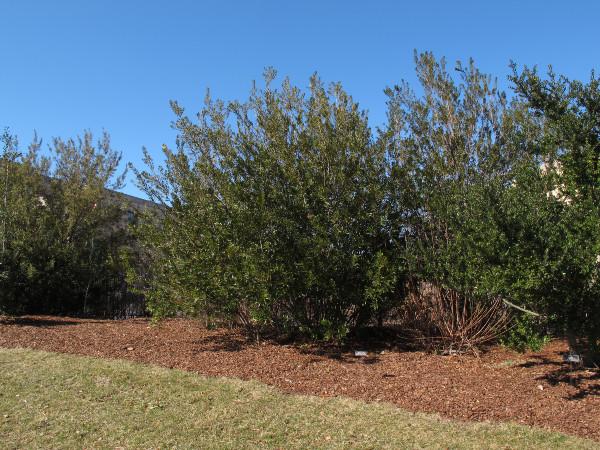About Northern bayberry
Morella pensylvanica
(Formerly Myrica pensylvanica)
Deciduous shrub
Maryland Distribution: marshes, tidal areas, dunes, swamps; Coastal Plain
Height: 5-10 feet
Flowers: yellow-green; not showy; wind-pollinated; blooms March-April
Fall color: semi-evergreen; may develop bronze or purplish overtones in cold weather
Sun: Full sun to partial shade
Soil: any texture; wet to dry; pH 5.1 to 6.5; tolerant of salt spray and saline soil
Garden Uses: This densely-branched native shrub grows naturally on sandy dunes, pine barrens, forest edges, and marshes along the US northeastern coast down to North Carolina. In Maryland, its natural range is mainly on the Coastal Plain. It can be deciduous or evergreen depending on the individual plant’s genetics as well as the impact of winter weather. The leaves are very fragrant when rubbed or crumbled. Small waxy gray berries are produced on female plants only; a male plant is needed for pollination. The fragrant berries are used to make bayberry candles.
It can be difficult to find nursery plants identified as male or female. Cultivars of this species may be difficult to find in stores or online, but some examples include Morella pensylvanica ‘Morton Male’, M. pensylvanica ‘Morton’ (female), and M. pensylvanica Bobbee™ (female).
This plant spreads by rhizomes. Use it for screening, informal hedges, erosion control on slopes, wet areas, rain gardens, or areas exposed to salt spray. It is drought-tolerant once established.
Wildlife: The berries are eaten by a variety of birds such as Yellow-rumped Warbler, Mockingbirds, Catbirds, Thrashers, American Robins, Cedar Waxwings, and Bluebirds. It is a host plant for a variety of moths.

